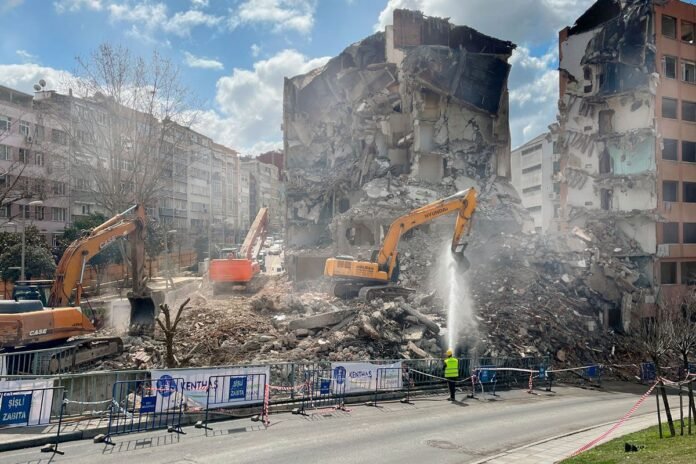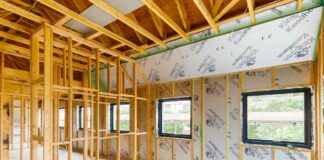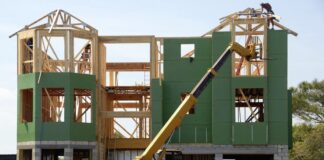While walking past a construction site, have you suddenly been covered in a cloud of dust that makes you cough? Yes, we’ve all been there. However, have you ever given a thought about the broader impact of this pollution from construction sites on our environment?
This isn’t just about dust and noise – it’s a multi-faceted problem impacting our air, water, and soil. Construction pollutes our environment and has far-reaching consequences on our health and the ecosystems around us.
What specific activities during construction contribute to this pollution? How do we stop the dust and toxins from construction and demolition from harming our atmosphere?
In this article, we’ll understand the full story behind construction pollution and explore solutions like carbon dioxide absorbing concrete, wind barriers and more.
What is Construction Pollution?
Before we take a look into the various causes, let’s understand what construction pollution actually is.
Simply put, it refers to the various types of pollution that occur at construction and demolition sites. Depending on the specific actions being carried out, this pollution may appear as soil, water, air, or noise pollution.
1. Air Pollution
Without a doubt, air pollutants are the biggest source of pollution related to construction. The worst part? Diesel engines power a number of vehicles and heavy machinery, releasing pollutants like carbon monoxide and hydrocarbons, which then pollute the air we breathe.
When tearing buildings down or clearing land, dust storms end up adding to air pollution. Tiny particles from elements including wood, silica, cement, and concrete make up this dust. It often contains sulphates and silicates, which makes breathing difficult, particularly for those in close proximity.
Depending on the size of the project, there are also emissions from dangerous chemicals used in construction – paints, glues, oils, thinners, plastics, and more.
may worsen the state of the air. Due to their combined effects on the environment and public health, air pollution is a major problem in the construction sector. It all adds up to a big air pollution problem for the construction industry.
2. Noise Pollution
Construction sites are known to be a source of a lot of noise pollution. On-site activities like excavation, drilling, and heavy machinery can contribute to a lot of noise. The barrage of sound can lead to a host of health problems, like hearing loss, heightened stress levels, high blood pressure, and disrupted sleep.
Site engineers and managers use a variety of techniques to lessen these effects, such as installing noise barriers and using high-end technologies with low sound levels. These steps are vital for shielding the environment from the constant noise of construction.
3. Water Pollution
Construction projects may cause major problems for waterways. It ruins natural habitats, poisons aquatic life, and disrupts whole ecosystems.
Through activities like drilling, excavation, and demolition, some dangerous contaminants are often discharged into lakes, streams, and rivers. These harmful pollutants seep into the water, making it dirty and unhealthy.
Certain operations, such as drilling, excavation, and demolition, have the potential to release hazardous substances into nearby lakes, streams, and rivers. Due to all that activity, dangerous contaminants may be released into the water, causing it to become contaminated and unsafe.
Construction sites pollute water in a variety of ways. When substances like paints, solvents, and adhesives leak into neighbouring waters, it leads to chemical contamination. This has the potential to severely impair aquatic ecosystems and lower water quality.
4. Soil Pollution
Soil contamination has a wide-ranging effect – it can make people sick and even wreck natural habitats for plants and animals. Construction-related biological pollution has the potential to completely destroy ecosystems, impacting not just the nearby region but the surrounding environment as a whole.
Another contributing factor to soil deterioration is physical contamination from building sites. The use of heavy equipment may erode and destabilise soil by weakening its compaction. Consequently, the soil becomes more susceptible to erosion
So, what can we do? Construction crews can use sediment management measures to keep dirt and debris from moving around too much. They can also test the soil regularly to catch any contamination problems early on.

Strategies for Mitigation
Although construction pollution is a major environmental problem, its effects can be effectively reduced. Putting up wind barriers, using water spraying, and following dust management techniques may lower airborne particulate matter and improve the quality of the air surrounding building sites.
Additionally, making the construction process greener may be achieved by using carbon dioxide-absorbing concrete, implementing idle-reduction measures, and using low-emission construction equipment.
Controlling sedimentation and erosion is essential for preventing water contamination. To properly regulate runoff, erecting silt barriers, sediment basins, and stabilising exposed soil is important. Moreover, the effect of construction noise on neighbouring communities may be reduced by using noise mitigation techniques and erecting temporary barriers.
To Sum Up
With cities continuing to expand, we need to invest in sustainable technologies, create stricter regulations, and develop more ecologically friendly construction methods.
Let’s work towards a healthier environment for all!
















